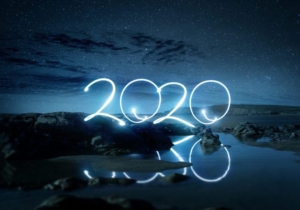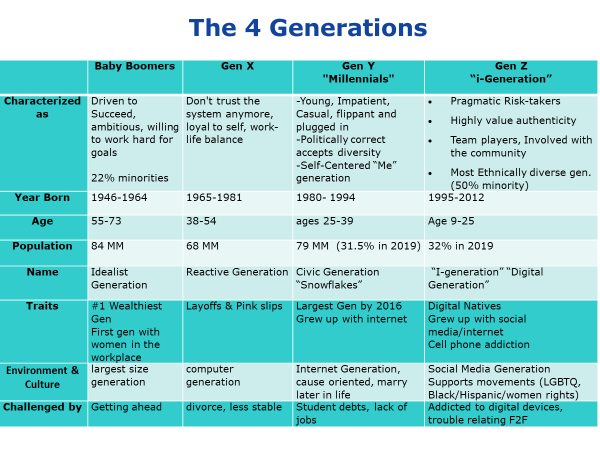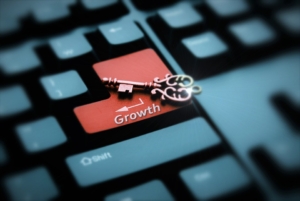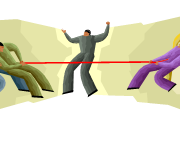Grow Your Business! 10 Winning Strategies for the New Decade
By Patrick McClure
Congratulations, and welcome to the New Decade. 
Today we start writing the history of YOUR business in the 2020’s. What will it include? Will we see spectacular growth, stellar revenue production and champagne toasts? Or will your decade be filled with lost business deals, declining revenue and sour grapes? The outcome is up to you, and now is the time to plan for your future.
Much of the future is uncertain, of course, but one thing we know for certain. Every one of us just got a year older! And every one of our customers and prospects got a year older. Time marched on for all of us, and this means we need to recalibrate, refocus, and refine our plans. What worked in the 2010’s will need to change to match the 2020’s. And if we don’t change, we risk getting run over by the onrush of technology, ideas, and youth.
In this spirit, we’ve put together this article to help prepare you for the future decade. After considerable research (both past and future), consultation with our focus groups (including millennials and Gen-Z), and getting feedback from industry peers, we are now prepared to put together the following list of the TOP 10 WINNING STRATEGIES FOR THE NEW DECADE.
Here they are:
1. Correct Target Market & Cohort
There are 4 major cohorts in today’s Marketplace, and it’s vital that you understand these generations and the changing buying patterns they bring. Here’s a quick snapshot of the essential features:
You can’t sell anything unless you understand your target market and who is doing their buying. This means understanding the environment they grew up in, the events that shaped their lives, their age, what they’re challenged by, and what’s important to them.
It’s also important to document the buying process at your key prospects. Oftentimes, you will find the actual buyer is a Baby Boomer or a Gen X, but the influencers are really Millennials or Gen Z. Typically, the busy executive will have “someone on their staff” research new products or directions and bring back a short list of what they found. If you are not influencing these younger influencers, you might never make the short list!
2. Unique Value Proposition
We don’t sell products anymore, and we don’t really sell benefits. The world has gone way beyond product details (unless you’re selling highly technical products). Buyers today are constantly asking “What’s in it for me,” or what will it do for my business and my bottom line. This means we need to shift our focus to the Unique Value of our product or service.
If there’s nothing unique about our product, we need to go back to the drawing boards and figure out WHY people are buying from us. Sometimes, the best way to understand your unique value proposition is to ask your buyers.
The key is to understand your UVP, and then BRAND your product with it. And for heaven’s sake make sure that you solve an actual problem for your customers. Don’t make the mistake of creating a “me too” product that doesn’t really solve a problem!
3. Marketing across Generations
If you understand the generations, you’ll appreciate something called “screen size.” Baby Boomers grew up with the television, and some of them were there when color screens were first introduced. They viewed the world through the lens of a television screen, and they received news on 3 major channels only.
Generation X (age 38-54) grew up with television, but increasingly their attention shifted to computer screens. First the desktop with an attached screen of varying sizes, then in later parts of the cohort this transitioned into laptop devices. The screen became smaller, and cable TV was introduced which expanded the number of channels.
Millennials (age 25-39) grew up with laptops and tablets, but their screen now included cell phones which now included email, texting, and web access as well as making phone calls. The screen size was now even smaller. And the next cohort, the sons and daughters of millennials (age 12-25) can seamlessly split their time across all 5 screens but are mostly focused on their cell phones. Indeed, 46% of their waking hours are spent peering at their cell phone screen, which is now leading to multiple medical problems and cell phone addiction (nomophobia).
If important for marketeers to understand their target market and concentrate their efforts on the best screen for their market. If you’re selling to Gen-Z, then you wouldn’t spend your marketing dollars on printed brochures or email campaigns! Conversely if your target market is baby boomers, you wouldn’t feature google ads or gaming consoles. You must match your marketing dollars to the correct screen!
4. Selling in the “New Normal”
Sales today occur at light speed. Buyers are demanding short, concise, value-based branding and gives them an instant WIFM (what’s in it for me). Everything today has accelerated, and you don’t have time for complicated messages. Keep it direct, simple, relevant, and compelling and don’t waste your buyers time!
5. Replace Cold Calling with Warm Calling
The years of cold calling or cold visits are pretty much over. In fact, one of my associates has written a best seller entitled “Never Cold Call Again,” (Frank Rumbauskas) in which he argues that cold calling is not only ineffective, but it damages credibility and drives away potential customers! My advice is simple: if you’re going to be using the phone for sales, make sure you are making “warm calls.” Research your prospects in advance, know their names and their company, and figure out a way to make the call valuable and not a waste of time. Pre-stage your calls by sending a text in advance (if you know their cell phone #), research them on LinkedIn, and try to get a warm referral from an associate or networking partner.
6. Deliver what they REALLY want at light speed
Speed of delivery is incredibly important. Customers are used to near-instantaneous results. They can order product and have it on their doorstep the next day (Amazon Prime), they can purchase and download movies and play them NOW, they can have groceries and products delivered by Wal-Mart or Target within minutes. They are used to near-immediate gratification and simple interfaces. If you have delays in your order fulfillment process, your customers will not tolerate it. Fix it!
7. Use Free as a Strategy
I can remember marketing a Presentation Skills training course for a bargain rate of $499 for an entire day of training. It was a killer price and always sold out in the past! But after renting a hotel room and filling it with 3 attendees (OUCH) I did my research and discovered that one of my competitors was offering a one-day class that same day in that same town for FREE!
The new selling strategy has evolved. Savvy marketeers are now enticing customers to try it out for free or nearly free, and then making their margins on upselling the next step. For instance, SalesForce.Com (the dominant CRM vendor) will happily give away a version of their CRM software to individual users. You can download it for free and use it if you like, and it works just fine. However, when you expand and want to add users or implement more advanced features of the software, you must upgrade (for a hefty fee).
On the retail side, visit Costco and cruise their aisles, and you can try dozens of samples. Of course, this drives huge incremental sales. Ergo Free as a strategy can really work!
8. Replace Selling with Influencing
Millennials and Gen-Z do not like the term “selling.” No one likes to be sold anything, but we all like to buy. The modern sales model uses a lot of “influencers” to generate brand awareness and buzz. Many influencers have hundreds and thousands of followers, and when they endorse a product (via Facebook, twitter, Instagram, or shapchat) it can lead to massive sales and profits.
One of the biggest influencers in social media today are performers. For instance, pop singer Selena Gomez (age 27 net worth $75MM) has 123 MILLION followers on Instagram! BTW, the last we checked her fee for simply mentioning your product in a post (implied endorsement) was over $1 MM.
Of course, you may not be able to afford a superstar endorsement, but your sales planning needs to include a strategy to attract influencers and get their support for your product/service.
9. Take advantage of Technology
Of course, make sure you’re taking full advantage of any technology at your disposal. Depending on your target market, divide your sales & marketing budget accordingly. There are huge benefits to be tapped into with social media, web design, social media marketing, gaming, virtual reality, and online advertising.
10. Hire a Gen-Z or Gen-Y
In order to fully implement technology, my best advice is to hire a Gen-Y (Millennial) or a Gen-Z for your marketing department. First job is to have them review your marketing plan for 2020 and tell you what’s wrong with it! They will not back off from their honest opinions, and they’ll probably give you some great advice.
You might have to bite your tongue and learn to tolerate a younger brash employee who expresses their opinion freely with no filter, but it will be worth it. Especially if you want to connect with a younger target market, it pays you to listen well.
 So, there you are! 10 quick strategies for survival in the new decade. Good luck and let me know your success with these tips!
So, there you are! 10 quick strategies for survival in the new decade. Good luck and let me know your success with these tips!
Permission is needed from Patrick McClure and Lighthouse Consulting Services, LLC to reproduce any portion provided in this article. © 2020
Patrick McClure is a senior sales consultant with Lighthouse Consulting Services, LLC as well as speaker, trainer and author who enjoys working with individuals and corporations to help them achieve maximum performance. He has dedicated his practice to helping others become more successful and specializes in sales training. To learn more and receive Patrick’s free newsletter, please email Patrick at patrick@lighthouseconsulting.com. Or call him at 310-453-6556, ext 415.
If you would like additional information on this topic or others, please contact your Human Resources department or Lighthouse Consulting Services LLC, Santa Monica, CA, (310) 453-6556, dana@lighthouseconsulting.com & our website: www.lighthouseconsulting.com.
Lighthouse Consulting Services, LLC provides a variety of services, including in-depth work style assessments for new hires & staff development. LCS can test in 19 different languages, provide domestic and international interpersonal coaching and offer a variety of workshops – team building, interpersonal communication and stress management.
To order the books, “Cracking the Personality Code”, “Cracking the Business Code” and “Cracking the High-Performance Team Code”, please go to www.lighthouseconsulting.com.








